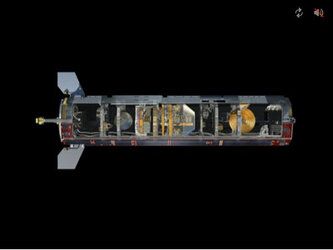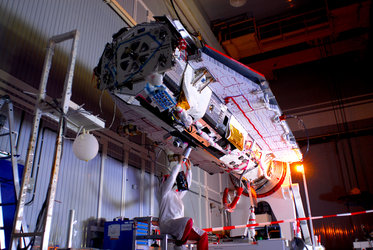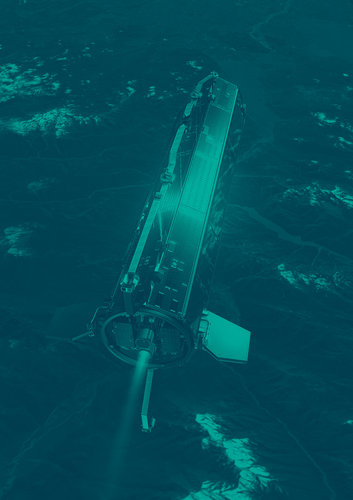A unique technical achievement
There have been other gravity-detecting missions flown in space – the German satellite CHAMP (2000) and the US-German GRACE (2002) – but these worked by measuring gravity-driven variations between the orbits of differing spacecraft. CHAMP tracked changes in distance between a satellite orbiting
While GOCE also employs GPS tracking to assess its orientation in space, its main instrument measures differences in gravity between accelerometers pivoted just 50 cm apart from each other, rather than between satellites hundreds or thousands of kilometres away. The result is that GOCE can detect gravity gradients down to a resolution of 100km apart, compared the a few thousand kilometres resolution yielded by CHAMP and
GOCE is also the first satellite to operate throughout its planned 20 month lifetime while maintaining an orbit such a low altitude. In the absence of GOCE's never-before-flown drag-free system the spacecraft would plunge steadily downward.
GOCE's results: a boon for next-generation space hardware
GOCE will serve up the most detailed map of gravity field variations ever – a product of high interest for scientific community, who can use the results to peer deep within the Earth's interior - but also with great technological potential.
Launchers such as ESA's Ariane 5 rely on inertial navigation to steer spaceward. But subtracting the effect of accelerations caused by gravity variations will reduce inertial positioning errors to a high degree, delivering higher-performance flights to orbit. And a more accurate reference model of Earth's gravity will produce a significant improvement in orbital calculations for satellites, in turn enabling more precise observations and the possibility of re-analysing older Earth observation data for enhanced accuracy.










